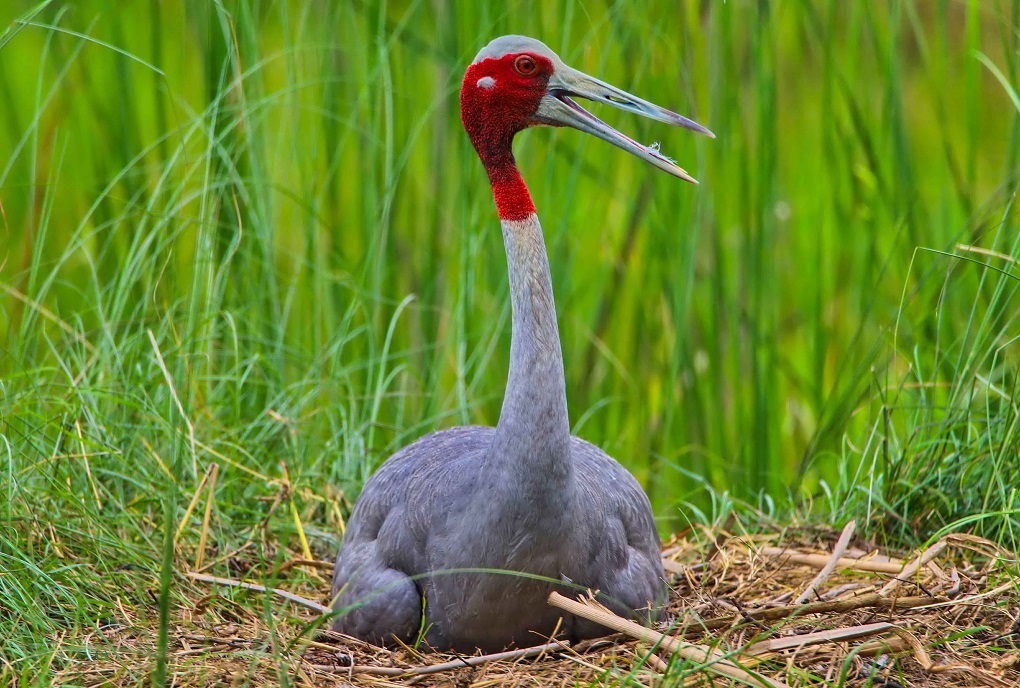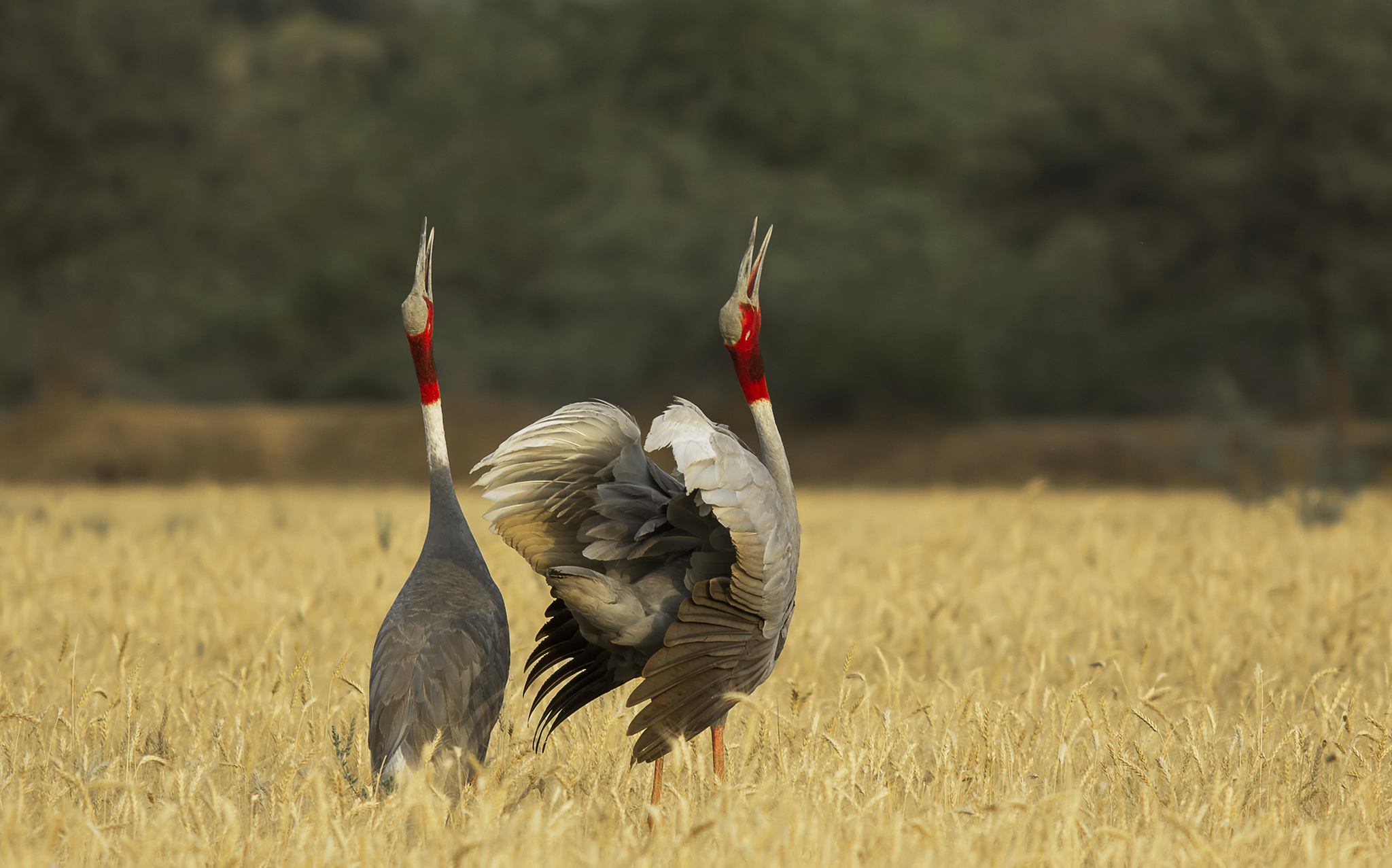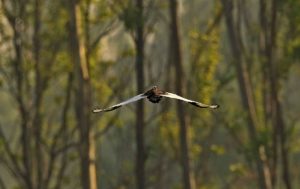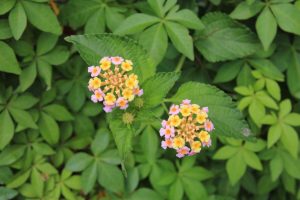

But it was another birth that gave new joy in Lumbini. Near the Vietnamese monastery, the elegant sarus cranes were roaming around a small pond. The rare birds were collecting tiny dry branches from the bush and other essentials for making the nest to hatch their eggs.

Careful to not startle them, I took photographs through a long-distance zoom lens, staying a substantial distance away, over 150 yards. This was a fantastic opportunity to see the cycle from breeding, dropping the eggs, hatching them, and watching the chicks take flight. The planning took great effort, and was only possible with the assistance of the caretakers.

The cranes created a nest almost half an hour walking distance from the pond. I visited at least once a week, sometimes twice. After three weeks the crane only dropped one egg. It took 37 days for the first chick to hatch from an egg. It took a few days for the chick to start walking, and guided and protected by its parents it mimicked their role, and was soon a confident offspring ready for the world.

Hem Sagar Baral, a Nepali ornithologist estimated that there are more than five hundred cranes found in the country. Of these, more than four hundred are found in the district of Rupandehi. Due to the fall in numbers, the bird was classified as “rare” in 2000.




Disclaimer: As stated in the piece, these photographs were taken from a substantial distance from the nest and chicks. Disturbing nest at an early stage is bad for the development of young birds, and except for research, nest and chick photography should not be attempted.
The story was first published on The Third Pole. Read the original story.
























